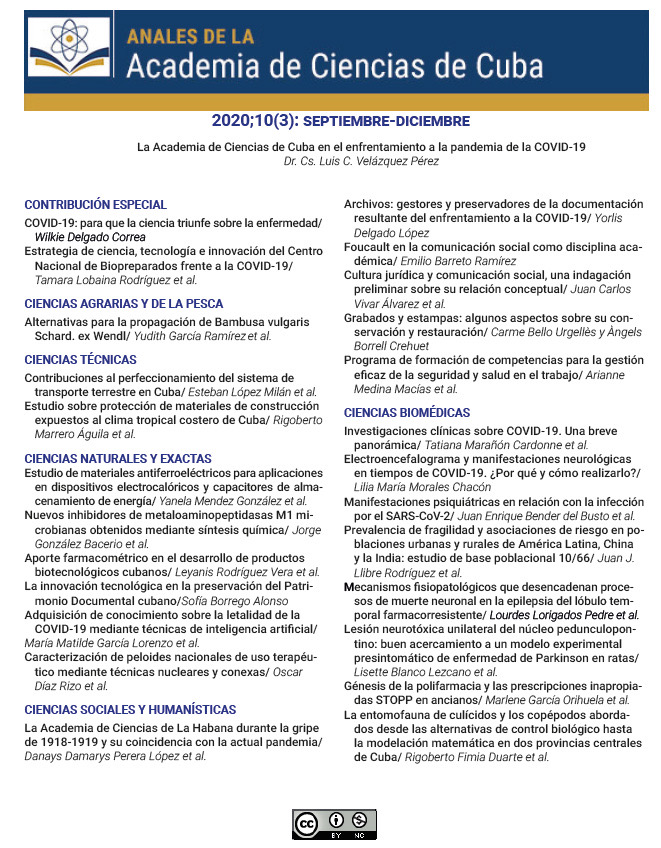Study of the antiferroelectric materials for applications in electrocaloric devices and energy-storage capacitors
Keywords:
antiferroelectric materials, electrocaloric effect, energy-storage properties, hysteresis loops, dielectric measurementAbstract
Introduction. This proposal shows the studies achieved on both lead-based and lead-free antiferroelectric ceramics, as materials with potential for technological applications.Objectives. The most significant contributions to scientific knowledge, which support the novelty and topicality of this research, are: i) Investigation of the influence of the lanthanum concentration on the structural, dielectric and ferroelectric properties of both (Pb1-xLax)(Zr0.95Ti0.05)1-x/4O3 and (Bi0.5Na0.5)0.92Ba0.08-3x/2LaxTiO 3 (x = 0, 1, 2 and 3 at%) ceramics systems; ii) Study of energy storage properties and electrocaloric effect in both systems; iii) Evaluation of these ceramics for technological applications based on dielectric capacitors and electrocaloric devices.
Methods. The physical properties of the ceramics were studied by XRD technique as well as Raman spectroscopy and a modified Sawyer-Tower circuit.
Results. A large electrocaloric response has been reached for the (Pb0.980La0.020)(Zr0.950Ti0.050)0.995O3and (Bi0.5Na0.5) 0.92Ba0.05La0.02TiO3 compositions, which is significantly higher than those reported for ceramic systems. On the other hand, the (Bi0.500Na0.500) 0.920Ba0.065La0.010TiO3 ceramic revealed the best energy storage properties.
Conclusions. These findings open the possibility of developing new ceramic systems to be used in next-generation cooling technologies, without the use of greenhouse gases, replacing conventional gas compression. In addition, the lead-free materials with high energy storage density are of great importance for the development of clean and renewable energy devices, such as dielectric capacitors, which provide additional ecological value because they contribute to environmental protection.
Downloads
Published
How to Cite
Issue
Section
License
The journal Anales de la Academia de Ciencias de Cuba protects copyright, and operates with a Creative Commons License 4.0 (Creative Commons Attribution-NonCommercial License 4.0). By publishing in it, authors allow themselves to copy, reproduce, distribute, publicly communicate their work and generate derivative works, as long as the original author is cited and acknowledged. They do not allow, however, the use of the original work for commercial or lucrative purposes.
The authors authorize the publication of their writings, retaining the authorship rights, and assigning and transferring to the magazine all the rights protected by the intellectual property laws that govern in Cuba, which imply editing to disseminate the work.
Authors may establish additional agreements for the non-exclusive distribution of the version of the work published in the journal (for example, placing it in an institutional repository or publishing it in a book), with recognition of having been first published in this journal.
To learn more, see https://creativecommons.org






